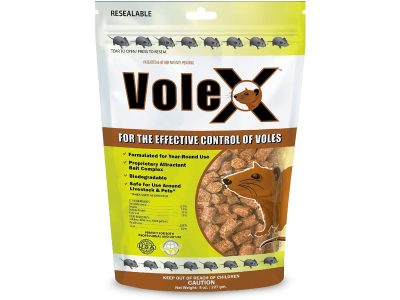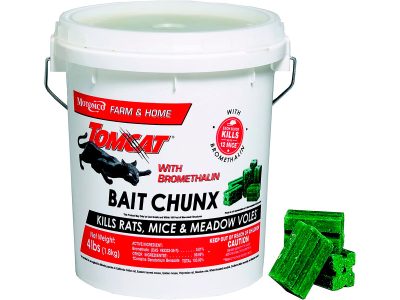Vole infestations can devastate lawns and gardens in remarkably short time frames, with these prolific rodents capable of destroying entire landscapes within weeks. While humane trapping and repellents offer effective solutions, severe infestations often require more aggressive intervention through carefully applied rodenticides. Our comprehensive guide covers the most effective and safest vole poisons available in 2025, emphasizing EPA-approved products and responsible application methods that protect children, pets, and wildlife.
Quick Picks: Best Vole Poisons

Safest Option
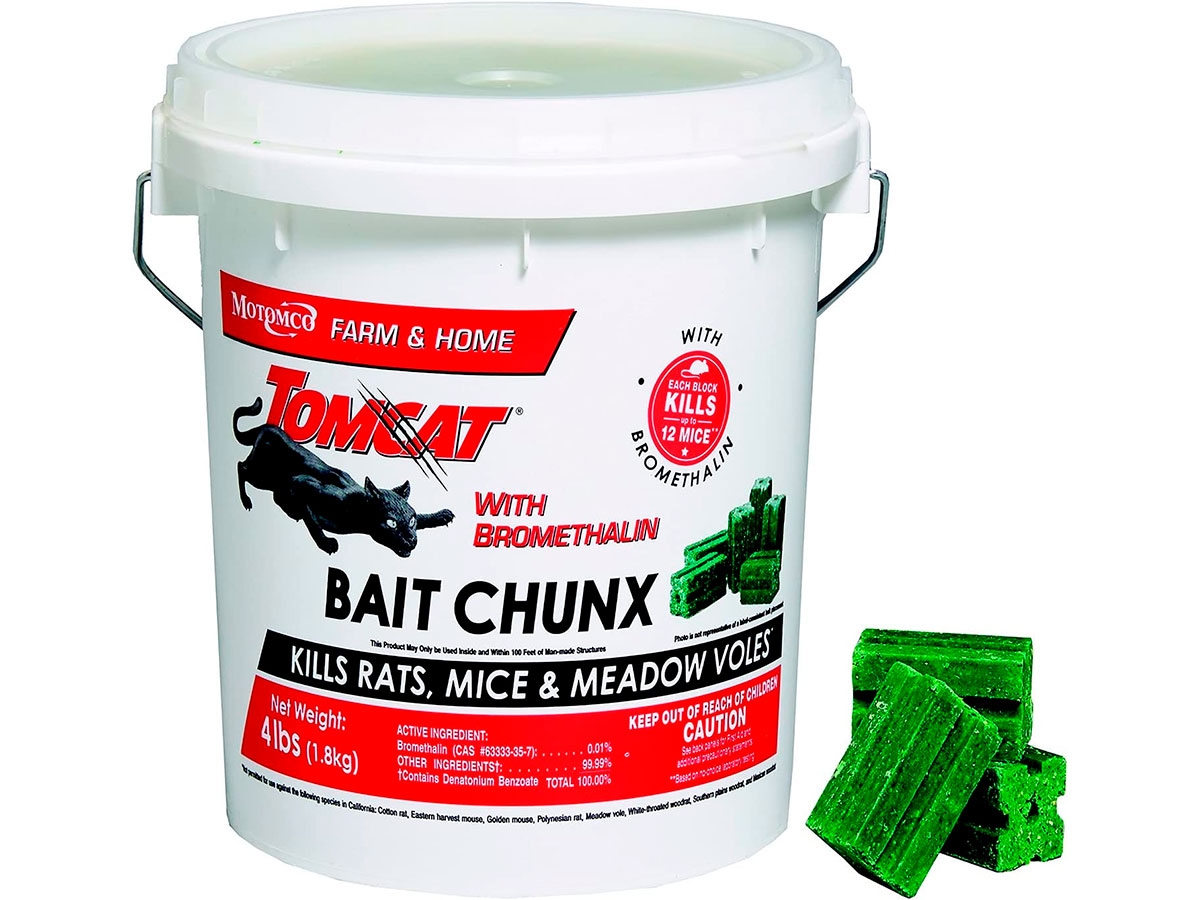
Most Effective

Pet Safer
- Understanding Vole Poisons: Safety First in 2025
- Top 5 Best Vole Poison Products for 2025
- EPA Safety Regulations and Compliance
- Understanding Rodenticide Mechanisms
- Safe Application Protocols
- Pet and Wildlife Safety Considerations
- Alternative Control Methods Integration
- Frequently Asked Questions
- Conclusion
Understanding Vole Poisons: Safety First in 2025
The landscape of vole control has evolved significantly due to enhanced EPA safety regulations implemented in recent years. Modern rodenticides must meet stringent safety standards designed to protect children, pets, and non-target wildlife while maintaining effectiveness against destructive vole populations.
Vole poisons work primarily through two mechanisms: anticoagulation (preventing blood clotting) and neurological disruption. Understanding these mechanisms helps you choose the safest and most appropriate product for your specific situation.

Top 5 Best Vole Poison Products for 2025
After extensive research and analysis of current EPA approvals, safety profiles, and effectiveness data, these products represent the best options available to homeowners in 2025.
VoleX Pellets by EcoClear Products
Safest OptionHow Does It Work
How to Use
- Apply pellets directly into vole holes and along active runways
- Use 1-2 tablespoons per application site
- Reapply every 2 weeks until activity ceases
- Keep pellets dry for maximum effectiveness
- Safe for use around livestock and pets when used as directed
- 100% naturally derived ingredients
- EPA minimum-risk pesticide classification
- Safe for use around children, pets, and livestock
- No secondary poisoning risk
- Biodegradable and environmentally friendly
- Reduces odor by 90% through desiccation
- Made in USA with rigorous quality control
- Higher cost per application than traditional poisons
- Requires more product for severe infestations
- Effectiveness reduced if pellets become wet
- May take longer to show results than neurotoxins
Tomcat Bromethalin Bait Chunx
Most EffectiveHow Does It Work
How to Use
- Place one bait chunx every 8-12 feet in infested areas
- MUST use tamper-resistant bait stations for outdoor application
- Check and replenish baits regularly
- Wear disposable gloves when handling
- Remove dead voles promptly to prevent secondary poisoning
- Kills up to 12 voles per 1 oz block
- Single-feeding lethality for rapid results
- Mold and moisture-resistant formulation
- EPA approved for residential use
- Effective within 24-48 hours
- No distinctive odor to avoid bait shyness
- High toxicity requires extreme caution around pets and children
- No antidote available if accidentally consumed
- Risk of secondary poisoning to predators
- Must be used in tamper-resistant bait stations
- Packaging not child-resistant (requires secure storage)
Kaput Warfarin Vole Bait
Pet SaferHow Does It Work
How to Use
- Apply 3 tablespoons per bait station
- Place stations along active vole runways
- Refresh bait every 7 days for optimal effectiveness
- Use approximately 12 ounces to control one vole hotspot
- Always use with dedicated vole bait stations
- Lowest toxicity rodenticide available (0.025% warfarin)
- Antidote available (Vitamin K)
- Fast metabolism reduces secondary poisoning risk
- 94.7% effectiveness rate in field trials
- Contains special attractants for voles
- Grain-based formula preferred by voles over pellets
- Poses minimal threat to birds of prey
- Requires multiple feedings over several days
- Less effective than neurotoxins for rapid control
- May not work on warfarin-resistant vole populations
- Requires frequent bait refreshing
EPA Safety Regulations and Compliance
Understanding current EPA regulations is crucial for safe and legal vole poison use. Recent regulatory changes significantly impact product availability and application requirements.
2025 EPA Regulatory Framework
Current EPA restrictions for residential vole control products include:
| Restriction Category | Requirement | Impact on Homeowners |
|---|---|---|
| Package Size | Maximum 1 pound for residential products | Limits bulk purchases, ensures manageable quantities |
| Bait Stations | Tamper-resistant stations required for outdoor use | Additional cost but enhanced safety |
| Active Ingredients | Second-generation anticoagulants banned for consumer use | Professional-only access to most potent formulations |
| Pellet Formulations | Loose pellets banned for residential use | Block or paste formulations only |
State-Specific Regulations
Some states have implemented additional restrictions beyond federal requirements:
- California: Complete ban on all anticoagulant rodenticides for residential use (with limited exceptions)
- New York: Enhanced labeling requirements for professional applications
- Hawaii: Restrictions on certain formulations to protect native wildlife
- Washington: Additional requirements for predator protection measures
Understanding Rodenticide Mechanisms
Different vole poisons work through distinct biological mechanisms, each with specific advantages and safety considerations.
First-Generation Anticoagulants
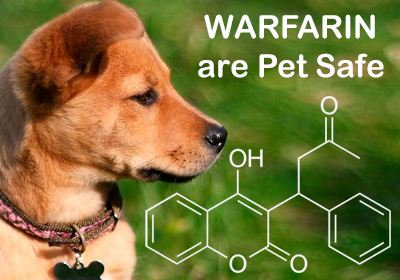
Active Ingredients: Warfarin, Diphacinone, Chlorphacinone
These compounds interfere with vitamin K synthesis, preventing proper blood clotting. They require multiple feedings over 3-7 days to achieve lethal doses, providing a safety margin against accidental single exposures.
Safety Advantages:
- Lower acute toxicity than second-generation alternatives
- Shorter tissue persistence reduces secondary poisoning risk
- Antidotes available (Vitamin K therapy)
- Multiple-dose requirement reduces accidental poisoning
Second-Generation Anticoagulants (Professional Use Only)
Active Ingredients: Brodifacoum, Bromadiolone, Difenacoum, Difethialone
These highly potent compounds can achieve lethal doses from single feedings and persist longer in animal tissues. Due to environmental and safety concerns, they’re restricted to professional pest control operators.
Non-Anticoagulant Neurotoxins
Primary Example: Bromethalin
Bromethalin disrupts cellular energy production in nerve cells, causing cerebral edema and neurological failure. It offers rapid action but lacks antidotes, requiring extreme caution in application.
Safe Application Protocols
Proper application technique is as important as product selection for achieving effective, safe vole control.
Pre-Application Preparation
Safety Checklist
- Secure all pets indoors during application
- Notify family members of treatment areas
- Gather required safety equipment (gloves, bait stations)
- Identify and map all vole activity areas
- Check local weather forecast (avoid rainy periods)
Strategic Placement Techniques
Professional-level placement strategies maximize effectiveness while minimizing risks:
- Tunnel Placement: Insert bait directly into active vole tunnels using specialized applicators
- Runway Positioning: Place bait stations along well-worn surface paths
- Burrow Treatment: Target entrance holes with measured bait quantities
- Protected Locations: Use covered areas to prevent weather exposure and non-target access
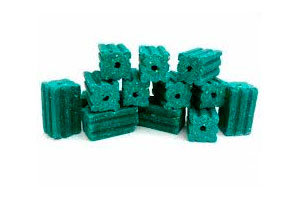
Monitoring and Maintenance
Successful vole poison programs require consistent monitoring and adjustment:
- Daily Checks: Inspect bait stations for consumption and tampering
- Bait Refresh: Replace consumed or weathered baits promptly
- Carcass Removal: Collect and dispose of dead voles to prevent secondary poisoning
- Activity Assessment: Monitor for new vole signs indicating population recovery
Pet and Wildlife Safety Considerations
Protecting non-target animals requires careful product selection and application methods tailored to your specific environment.
Risk Assessment by Active Ingredient
| Active Ingredient | Pet Risk Level | Wildlife Risk | Secondary Poisoning Risk | Antidote Available |
|---|---|---|---|---|
| Warfarin | Low | Low | Minimal | Yes (Vitamin K) |
| Diphacinone | Low-Medium | Low-Medium | Low | Yes (Vitamin K) |
| Bromethalin | High | High | High | No |
| Zinc Phosphide | High | Medium | Low | Limited |
| VoleX (Natural) | Very Low | Very Low | None | Not Needed |
Pet-Specific Safety Measures
For Dog Owners:
- Consider your dog’s scavenging behavior and curiosity level
- Use elevated bait stations inaccessible to pets
- Choose warfarin-based products when possible (antidote available)
- Maintain strict supervision during outdoor activities
For Cat Owners:
- Cats face lower direct risk but higher secondary exposure from hunting
- Select products with rapid metabolism (warfarin preferred)
- Monitor cats for unusual behavior during treatment periods
- Consider indoor containment during active treatment phases
Alternative Control Methods Integration
The most effective vole control programs combine multiple approaches for comprehensive population management.
Integrated Pest Management (IPM) Approach
Professional pest managers recommend combining poison applications with complementary strategies:
Habitat Modification
Remove tall grass, weeds, and debris that provide vole cover and nesting sites.
Physical Barriers
Install hardware cloth around valuable plants and tree bases to prevent access.
Targeted Trapping
Use traps in sensitive areas where poisons pose unacceptable risks.
Sequential Treatment Strategy
Professional-grade control often follows this progression:
- Phase 1: Habitat modification and population assessment
- Phase 2: Intensive poisoning campaign (2-3 weeks)
- Phase 3: Maintenance trapping and monitoring
- Phase 4: Prevention through landscape management
Frequently Asked Questions
What is the safest vole poison for households with pets?
VoleX Pellets represent the safest option, using naturally derived ingredients with EPA minimum-risk pesticide classification. For traditional rodenticides, warfarin-based products like Kaput offer the lowest toxicity with available antidotes.
A 50-pound dog would need to consume over 7 pounds of warfarin-based bait for lethal effects, compared to just 4 ounces of more toxic alternatives. Always use tamper-resistant bait stations regardless of product choice.
How quickly do vole poisons work?
Effectiveness varies by active ingredient. Bromethalin-based products like Tomcat Bait Chunx can kill within 24-48 hours of consumption. First-generation anticoagulants typically require 3-7 days, while natural products like VoleX take 3-5 days.
Faster action doesn’t always mean better control. Multiple-dose requirements of safer products can provide better population-wide effectiveness by ensuring all colony members consume lethal quantities.
Can I use rat poison for voles?
Many rat poisons are effective against voles, but products specifically labeled for vole control are preferred. Vole-specific formulations often contain attractants and bait formulations more appealing to voles than generic rat products.
Always verify EPA labeling includes voles as a target species before application. Using products outside their labeled applications violates federal law and may reduce effectiveness.
What should I do if my pet eats vole poison?
Contact your veterinarian immediately, regardless of the quantity consumed. For warfarin-based products, Vitamin K therapy provides an effective antidote if administered promptly. For bromethalin or zinc phosphide products, immediate professional treatment is critical as no specific antidotes exist.
Bring the product label or take photos of ingredient information to assist veterinary treatment. Early intervention significantly improves outcomes for all types of rodenticide exposure.
Are there any vole poisons banned in certain states?
Yes, California has implemented a comprehensive ban on all anticoagulant rodenticides for residential use, with limited exceptions for government and commercial operations. Other states like New York and Washington have additional restrictions on certain formulations.
Always check local regulations before purchasing rodenticides. Some municipalities have their own restrictions beyond state requirements, particularly in areas with sensitive wildlife populations.
How long do vole poisons remain effective in outdoor conditions?
Block formulations typically maintain effectiveness for 1-2 weeks in dry conditions, while moisture can reduce effectiveness within days. Weather-resistant formulations like Ramik Green offer better longevity but still require regular monitoring and replacement.
Natural products like VoleX require dry conditions for optimal effectiveness. Always use tamper-resistant bait stations to protect baits from weather and maintain a regular inspection schedule.
Can voles develop resistance to poisons?
Voles can develop resistance to first-generation anticoagulants in areas with repeated exposure over multiple generations. However, resistance is less common than with Norway rats and can often be overcome by switching active ingredients or increasing application intensity.
Rotating between different classes of rodenticides (anticoagulants vs. neurotoxins vs. natural products) helps prevent resistance development while maintaining effective control.
Conclusion
Effective vole control in 2025 requires balancing maximum effectiveness with enhanced safety standards mandated by current EPA regulations. The most successful approaches combine proven rodenticide technologies with responsible application methods that protect human health, pets, and environmental integrity.
Key success factors for safe vole poison use:
- Select products appropriate for your specific risk tolerance and household composition
- Always use EPA-required tamper-resistant bait stations for outdoor applications
- Follow label directions exactly and maintain proper storage protocols
- Monitor applications consistently and remove dead voles promptly
- Combine poison applications with habitat modification for long-term control
- Prepare emergency response procedures before beginning treatment
The evolution toward safer vole control products like VoleX demonstrates the industry’s commitment to environmental responsibility without sacrificing effectiveness. For households prioritizing safety, these natural alternatives provide viable options that protect families while addressing vole problems.
Traditional rodenticides retain their place in comprehensive vole control programs, particularly for severe infestations requiring rapid population reduction. However, modern applications demand enhanced safety measures, proper equipment, and thorough understanding of risks and mitigation strategies.
Whether you choose cutting-edge natural formulations like VoleX, time-tested anticoagulants like Kaput warfarin bait, or fast-acting neurotoxins like Tomcat Bromethalin, success depends on matching the right product to your specific situation and applying it with professional-level care and attention to safety.
By following the guidelines, safety protocols, and product recommendations outlined in this comprehensive guide, you can achieve effective vole control while protecting what matters most – your family, pets, and environment. The investment in proper products and application methods pays dividends in both immediate control success and long-term peace of mind.
